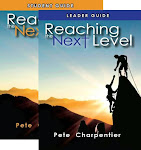When most Believers (new Believers, for sure) first start looking at the Bible, they’re overwhelmed. I mean, the Bible’s a BIG book. In fact, it’s actually a big collection of 66 books, and trying to wrap your brain around God’s Word is like trying to wrap your arms around a skyscraper!
But while you’ll never exhaust the Bible because it’s God’s inspired word (see 2 Timothy 3:16-17), there’s a way to make sense of what the Bible’s all about in general, and it’s the Bible Puzzle.
Okay, I know what you’re thinking: The Bible Puzzle? Hmmm, what’s that?
Well, at the risk of over simplifying God’s Word, let’s just lay it out like a puzzle and try to fit the pieces (it’s 66 books) together in order to get a bird’s eye view of the Scriptures. While you definitely want to study the Bible more in-depth in the future, you have to start somewhere, and this is a great place.
Ready? Wonderful! Now let’s dive into the Old Testament. First, you need to find the historical edge-pieces.
Have you ever made a puzzle before? There are only two kinds of pieces to every puzzle – The edge-pieces and the inside-pieces. And one of the best (and easiest) places to start when you’re putting a puzzle together is with the edge-pieces. Why? Because you can quickly identify them since they all have at least one flat side somewhere on them!
So what books of the Bible are the historical edge-pieces? Here you go…
• Genesis (From Creation to Egypt)
• Exodus (From Egypt to Sinai)
• Numbers (From Sinai to the Wilderness)
• Joshua (From the Wilderness to the Promised Land)
• Judges (Israel's Leadership Before the Kings)
• Ruth (Life During the Judges)
• 1 & 2 Samuel (From Saul to David)
• 1 & 2 Kings/1 & 2 Chronicles (From Solomon to the Captivity/Exile)
• Ezra (From the Captivity/Exile to Rebuilding the Temple)
• Nehemiah (From Captivity/Exile to Rebuilding Jerusalem’s Wall)
• Esther (Life During the Captivity/Exile)
There you have it!
Of course, you might immediately ask: Hey, where’s all the other books of the Old Testament? Good question. They all fit inside the edge-pieces because they’re, well, you guessed it – the inside-pieces.
And just like the inside-pieces of a puzzle have tons of shapes, sizes, and colors, the inside-pieces of the Bible have a lot of variety as well. For example, some pieces are “Law” pieces; some are “Psalm” pieces; some are “Prophecy” pieces; etc. While we can spend hours studying all these pieces closely and in-depth (which is a great thing to do, by the way), we’re only trying to get a bird’s eye view of the Bible, remember? So let’s stay simple and general.
Okay. Here’s where the inside-pieces fit…
• Leviticus & Deuteronomy (Inside the First Five Books of the Bible – Law Books)
• Job, Psalms, Proverbs, Ecclesiastes, Song of Solomon (Stories, Songs, Writings on Life Primarily During the Period of Israel’s Kings)
• Isaiah, Jeremiah, Lamentations, Ezekiel, Daniel, Hosea, Joel, Amos, Obadiah, Jonah, Micah, Nahum, Habakkuk, Zephaniah, Haggai, Zechariah, Malachi (Prophetic Messages Preached During the Period of the Kings, Captivity/Exile, and Return from Captivity/Exile)
Again, we could spend a lot of time taking about which Prophets preached during the reign(s) of which Kings, when exactly did the story of Job occur (some people believe it may be the oldest book in the Bible even though Genesis describes "the beginning" and how God creates the world), and which Prophets preached and served during the Captivity/Exile and Return, but remember: We’re staying “general” here. So don’t complicate things for yourself.
Now you have the historical edge-pieces and the inside-pieces of the Old Testament.
We’ll deal with the New Testament in the same way in another blog: The Bible Puzzle – Part Two: New Testament. Check it out sometime when you get a chance…
[For a great resource on an overview of the entire Bible, see the book listed to the right on my blog under the heading "For Fellow-Bookworms..." by Max Anders entitled 30 Days to Understanding the Bible.]
Friday, April 23, 2010
Subscribe to:
Post Comments (Atom)




No comments:
Post a Comment